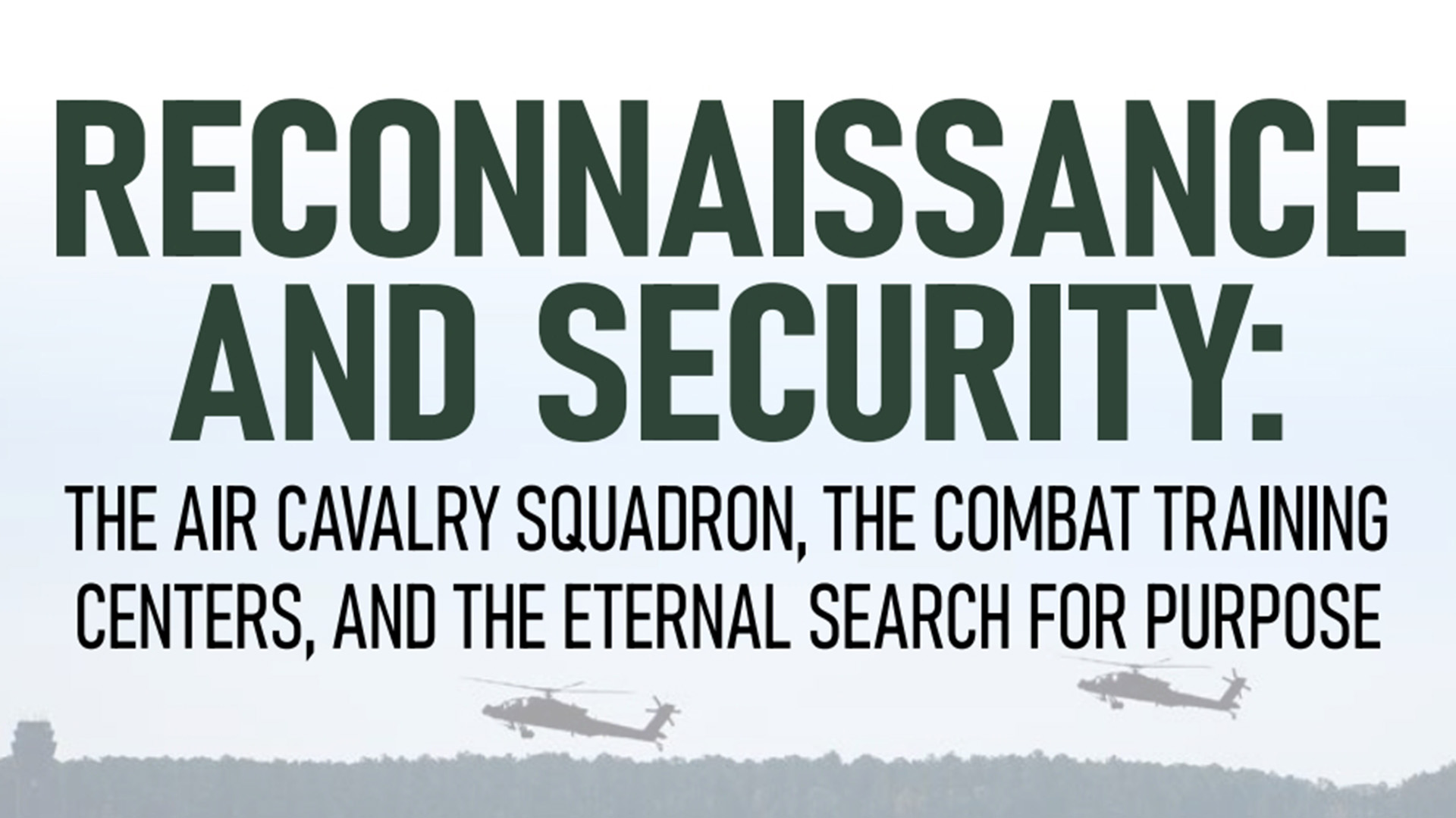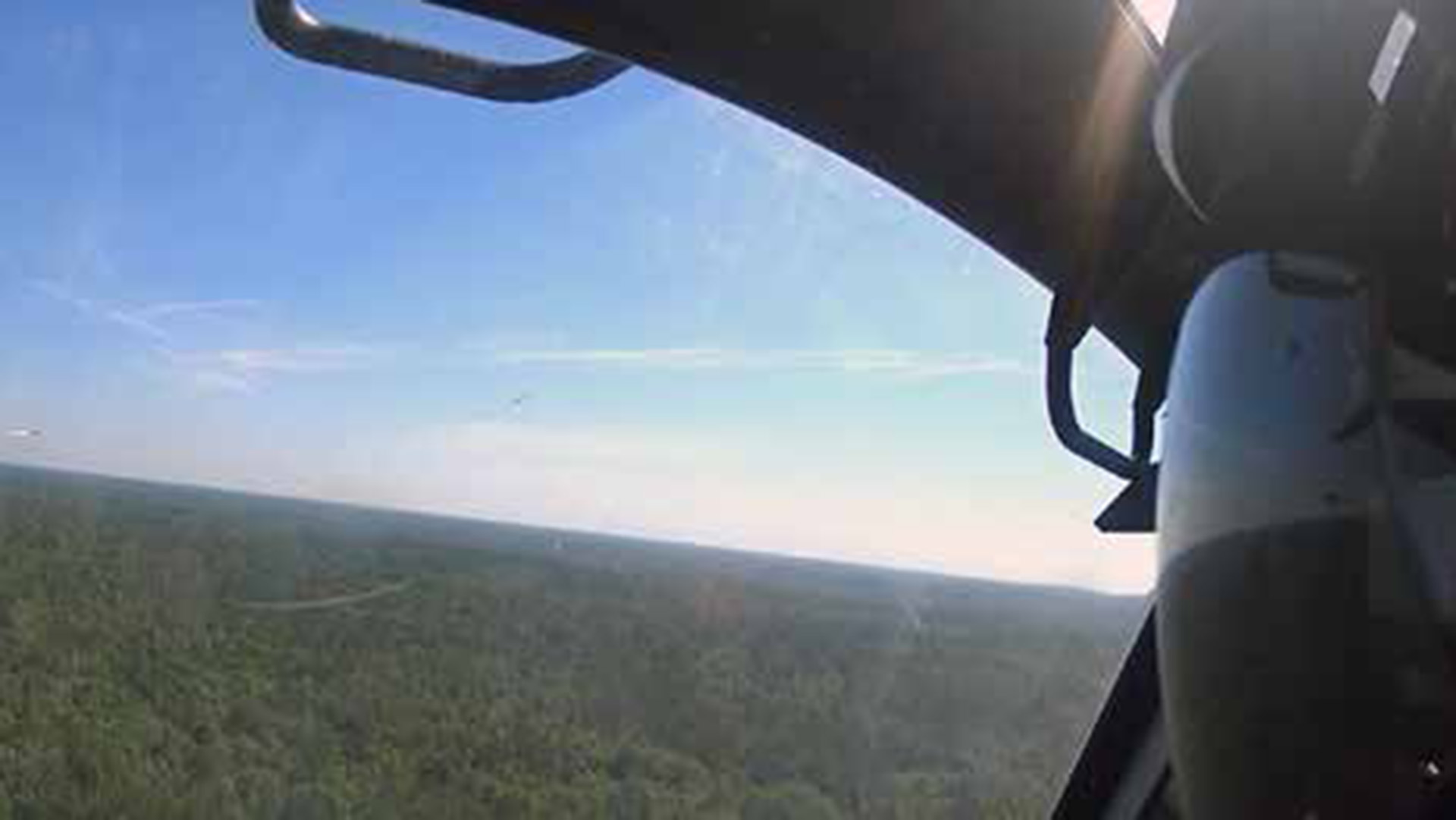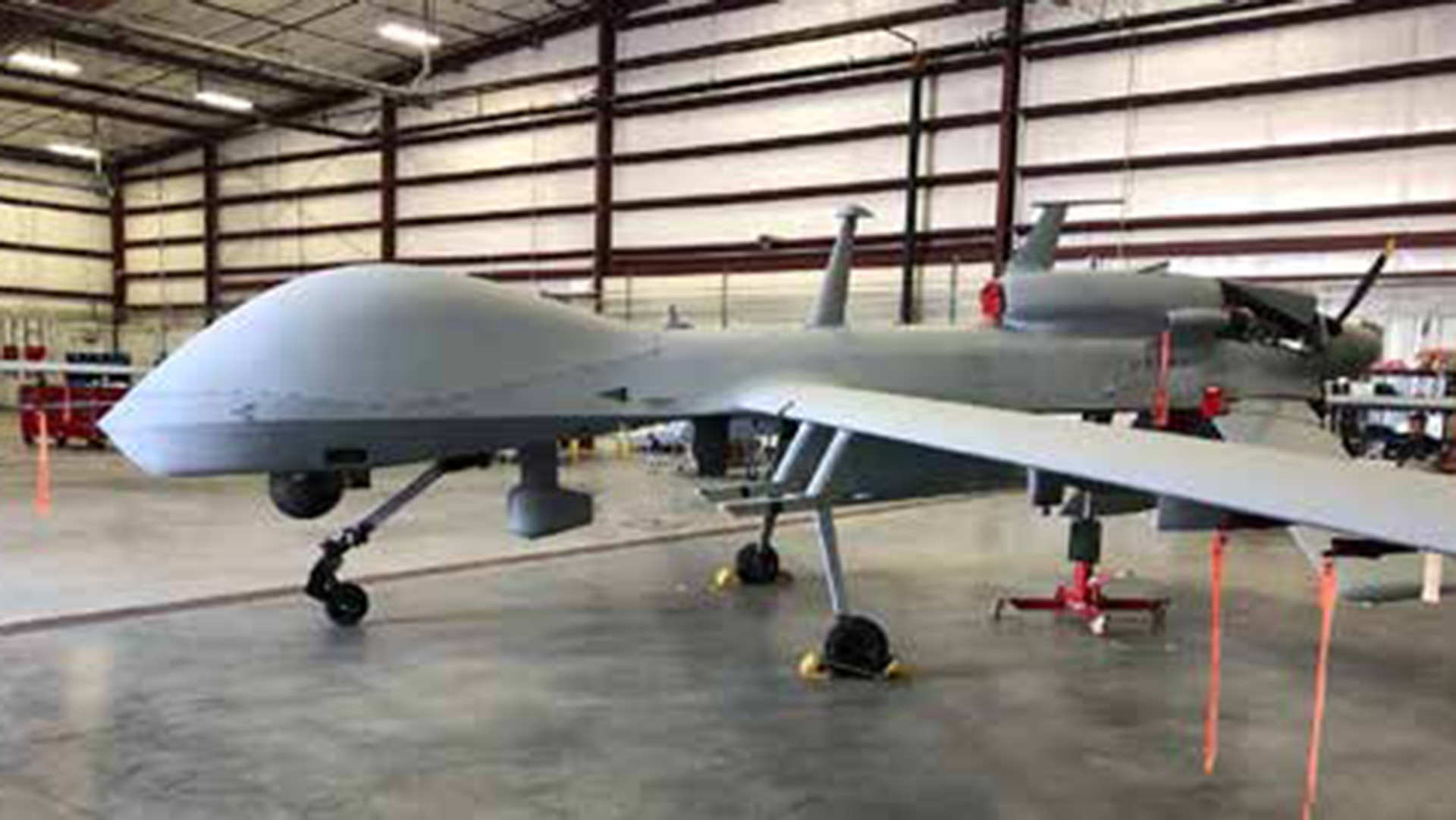Reconnaissance and Security
The Air Cavalry Squadron, The Combat Training Centers, and The Eternal Search for Purpose
By MAJ Ryan J. Kirkeby
Article published on: October 1, 2024 in the Aviation Digest October-December 2024 Issue
Read Time: < 10 mins

U.S. Army, Air Force team up to load helicopters at Shaw Air Force Base, South Carolina. U.S. Air Force photo by SSgt Kelsey Owen.
The Air Cavalry Squadron (ACS) is not a new concept within Army Aviation—the Aviation Restructure Initiative, approved in 2014 by former Army Chief of Staff, GEN Raymond T. Odierno, looked to replace aging aerial reconnaissance platforms, specifically the OH-58D Kiowa Warrior, with a combination of AH-64 Apache Helicopters and RQ-7B Shadows (unmanned aircraft systems [UAS]).1 While the organization and mission-essential tasks have changed in the years since, the ACS’ focus (on paper) remains firmly within aerial reconnaissance and aerial security tasks instead of aerial attack missions. While the differences between an ACS and an attack battalion (AB) may seem obvious to some, the ground force commander will ask both organizations to conduct the AH-64’s consistent mission—shaping the division or brigade deep area with direct fires against targets on the ground force commander’s high payoff target list. The only difference between the organizations is how they go about accomplishing this task.
Regardless of what is being asked of an ACS, it is uniquely able to increase operational depth and the commander’s situational awareness, while also minimizing the risk to manned aircraft. As with any piece of equipment or system, you must use it properly if you hope to maximize its effectiveness. Each operational environment is unique and presents multiple dilemmas to any commander. This is easily demonstrated when you consider the Continental United States’ combat training centers (CTCs), namely the National Training Center (NTC) and the Joint Readiness Training Center (JRTC). The NTC provides vast, open deserts with significant terrain relief serving as an ideal maneuver space for armor and tracked vehicles, while JRTC features thick, high-canopy forests with minimal terrain relief, ideal for light infantry. Both change the role of an ACS, but the fundamentals of tactical employment remain largely the same.
The National Training Center
The Mojave Desert serves as an ideal location for armored forces to maneuver—vast deserts with minimal vegetation provide an excellent opportunity to focus on the employment of armored forces. When evaluating the operational design of the rotation, there is one clear mismatch the opposing force (OPFOR) has over the rotational unit (RTU): long-range fires. Rotational orders of battle for OPFOR include numerous batteries of 2S19s (Msta-S), which are armored, self-propelled howitzers with an operational range of 24–29 kilometers (km) (Operational Environment Data Integration Network [ODIN], n.d.-a.) and 9A51s (Prima), wheeled multiple rocket launcher system with an operational range of 21 km (ODIN, n.d.-b). Compared with the organic capabilities of an armored brigade combat team (ABCT), specifically the M109A6 Paladin (cannon artillery system), RTUs are unable to regularly match the ranges outlined above. The ACS seems a natural fit to identify and locate these key pieces of equipment through reconnaissance and security missions; however, in a resource-constrained environment, the ACS may be the only organization in an operational environment possessing the organic capability required to identify and destroy these targets. This requires the organization to shift focus to more of an AB, while maximizing the capabilities of an ACS.
The 6th Squadron, 17th ACS, proved mostly successful during NTC rotation 24-02, serving as an ACS that primarily operated as an AB. The squadron staff regularly set conditions through echelons above brigade (EAB) assets to suppress or defeat enemy air defense systems in the operational environment. Liaison officers proved effective at communicating the ACS’s ability to both identify and destroy enemy long-range fires to the task force (TF) Iron (3 ABCT, 4th Infantry Division) staff, who allowed the squadron the freedom of maneuver required to shape the division and brigade deep areas through a permissive series of standard use Army Aviation flight routes and airspace coordination areas. Flight troops facilitated the near-constant employment of the now-retired Shadow UAS, allowing commanders at echelon to maintain maximum situational awareness through zone and area reconnaissance. This allowed the UAS to regularly identify the trigger to launch AH-64s, ensuring the requisite number of targets existed in the operational environment before committing manned assets. The AH-64s would then begin prosecuting targets in an engagement area, while the UAS continued to identify targets that would then be prosecuted through division or brigade fires assets. One battle period saw the UAS responsible for the destruction of key strategic air defense systems and 2x batteries of self-propelled artillery with zero battle damage to the 6-17 ACS aircraft. The 6-17 ACS’s efforts resulted in TF Iron receiving little to no effective indirect fire, directly enabling their defense in-depth.
This technique proved particularly successful, given the context of the rotation. However, it is not the only way to employ manned and unmanned assets. Consider if EAB assets were not available at all or to a lesser degree in the scenario outlined above. Manned unmanned teaming (MUM-T), where UAS and AH64 work as a scout weapons team (SWT), could provide the same survivability to aircrews, while also allowing for similar effects on the battlefield. The UAS would observe targets on the battlefield and communicate observations to AH-64 pilots, who are maintaining standoff. Once targets are acquired and identified, the SWT then completes a remote Hellfire engagement, where the UAS provides the laser range finder/designator guidance to an AH-64 Hellfire missile. When employed effectively, this allows for an SWT to maintain operational tempo, while also maximizing the survivability of its aircrews.
The Joint Readiness Training Center
The Louisiana swamps prove incredibly challenging for any maneuver force. Thick, high-canopy trees not only limit the maneuverability of ground forces but deny helicopters the look-down angle required to acquire and identify targets while employing flight profiles that maximize the survivability of manned aircrews. This results in multiple dilemmas for the ground force commander and the ABTF commander alike. Ground force commanders are largely reliant on attack aviation to defeat or disrupt OPFOR armored formations, and the ABTF commander has to identify methods that are capable of minimizing the impacts of severely restrictive terrain. As with the NTC scenarios previously described, there are multiple ways to employ an ACS in any operational environment. The 4th Combat Aviation Brigade (CAB) experiences at the JRTC provide one employment technique that stands out as particularly effective.
Many factors shape the employment of an asset or an organization. Effectiveness on the battlefield is measured by your ability to acquire, identify, and engage the enemy, while also maximizing the survivability of aircrews. The JRTC presents a unique challenge to aviation employment due to the relative dimensions of the training area. Focusing primarily on light infantry brigades, the training area lacks the depth of the NTC. Manned unmanned teaming, when employed properly, allows the ACS to minimize the impacts of severely restrictive terrain, while also maximizing the effectiveness of aircrews.
Thorough area and zone reconnaissance by a UAS is essential to identify what avenue of approach OPFOR will utilize when employing its forces. Given the geography of the JRTC, there is minimal time from the UAS’ identification of OPFOR until OPFOR makes first contact with rotational force ground reconnaissance. This makes the posture of AH-64 aircrews critical—if they are not at the appropriate readiness condition level, AH-64s will miss the ability to shape the critical point of the battle before the preponderance of all forces are engaged in the close fight. At this point, AH-64s are relegated to mere bystanders as they become unable to quickly identify/ engage enemy forces without assuming significant tactical risk. The use of ground or air holding areas is a highly effective technique that minimizes tactical risk to aircraft, while also mitigating the tyranny of distance and allowing AH-64s to quickly respond when triggers are identified. This maximizes the standoff between OPFOR and friendly forces, mitigating accidental risk.

The photographer watches as an AH-64 Apache attack helicopter fires a Hellfire missile at a target that was laser designated by an MQ-1C Gray Eagle UAS at the Multi-Purpose Range Complex on Fort Stewart, Georgia. U.S. Army photo by CW3 Adam Kozel.
Once the UAS queue the AH-64s to a target area, MUM-T is critical to establishing and maintaining OPTEMPO. This mitigates the impact of terrain, as the UAS can maintain a near-vertical look-down angle during the engagement process. Assuming the fire distribution plan is known and understood in the pre-mission briefing and rehearsal, this process can easily disrupt or defeat enemy-tracked vehicle formations, while still maximizing the survivability of manned aircrews.
The Importance of Home Station Training
Home station training is critical to any team’s ability to execute MUM-T or queued engagements. Troops must prioritize SWT training in day-to-day continuation flights, aerial gunnery, etc., if they hope to build the proficiency required for a CTC. If all systems work as advertised, the scenarios described are significantly less difficult. However, when was the last time a troop pulled video metadata from a UAS flying overhead during an Aircrew Training Manual continuation flight to conduct simulated MUM-T engagements? Are our UAS operators able to make the communications relay system work? Do they know how to use the tactical satellite radio in their shelter? If they have received the Blue Force Tracking-2 (a force-tracking satellite communications network) upgrade, do they know how to use it? The answers to these questions will be able to drive a troop or a squadron’s home station training plan to maximize effectiveness in supporting a ground force commander. As these systems begin to malfunction (or to cease, in some instances), squadrons must know how they can work around these issues to keep the kill chain as streamlined as possible.

Gray Eagle UAS. U.S. Army Dugway Proving Ground photo by Becki Bryant
The Air Cavalry Squadron–Is it “Big R” Reconnaissance?
The Army sells the ACS as an organization mostly focused on reconnaissance and security tasks as a member of a combined arms team. While our mission-essential task list supports this theory, there is not a distinguishable difference to the ground force commander. Apache pilots (and more importantly, their staff) must remain proficient in aerial attack mission planning and how to incorporate “little R” reconnaissance and “little S” security into their scheme of maneuver, particularly with RQ-7B.2 Failure to do so denies the ground force commander significant combat power that can rapidly shape the battlefield in their favor and expose manned platforms to increased tactical and accidental risk.
A Note from the Author...
Well, this is slightly awkward. In the time it took to write this article and run it through the revision process, the Army decided to divest itself of the RQ-7B Shadow program. While the small UAS (sUAS) community is going through a transition period, the tactics, techniques, and procedures discussed in this article remain relevant, and leaders must ensure they remain familiar with how to conduct MUM-T with sUAS. In the meantime, the MQ-1C Gray Eagle easily fills the capability gap. However, the challenge is in the command relationship. Small UAS are (were) organic to the ACS, and while Gray Eagle is organic to the CAB, it generally operates in more autonomous environments. When considering that the ACS and Gray Eagle are expected to operate in the division deep area, mixing these assets for a period of time can align with the higher headquarters' convergence window and the massing of effects.
Notes
1. Editor's note: The RQ-7B Shadow UAS “was officially retired” on March 19, 2024 (Jennings, 2024).
2. “Little R” reconnaissance and “Little S” security speak to the depth and breadth that these missions are performed within the ACS. Reconnaissance and security missions will be performed, but only to develop situational awareness for the squadron/troop commanders as they execute aerial attack or aerial movement to contact missions. Reconnaissance and security missions will likely still be tasked to an ACS; however, these will mostly be a RQ-7B-specific tasking with AH-64 support only when direct contact is required (R. Kirkeby, personal communication, September 2024)
References
Author
MAJ Ryan Kirkeby is an AH-64D pilot stationed at Fort Carson, Colorado. He currently serves as the 4 CAB S3; his previous assignments include 6-17 ACS (S3/XO), JRTC Operations Group (Task Force Aviation), 12th CAB (A/1-3 and D/1-3 Commander), and 1 AD CAB (C/4-501 PL).